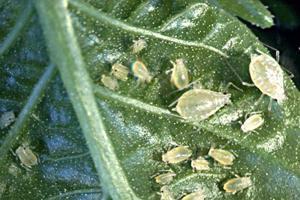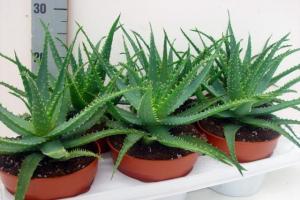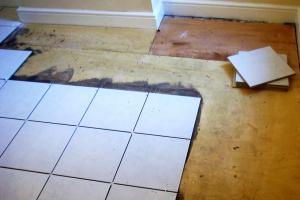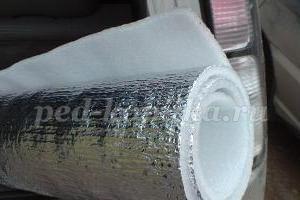For the cleaning oven can be used both special preparations designed to remove grease stains and carbon deposits, as well as a variety of ordinary household products available to any housewife. Often, to remove contaminants from the internal surfaces of the oven, a hydrolysis method is used, which softens deposits with steam. Below we present 12 simple ways to restore the cleanliness of your oven.
Before choosing the most suitable way To remove grease from the walls of the oven, read the basic rules for cleaning this type of kitchen equipment:
12 ways to clean your oven
To remove fat, stuck pieces of food, and soot, products such as table salt, ammonia, laundry soap, carbonic acid and others. To wash baking trays you can use dishwasher, and if it is absent, wash it in the sink in the usual way. For work you will need a piece soft fabric, brushes, rubber gloves should be worn to protect the skin of your hands.
Steam cleaning
The operating principle of this method is similar to that used in equipment with a hydrolysis function. Fill a baking tray with water and add 1 capful of dish soap. Turn on the oven by setting the temperature control to 150°C. The boiling water will turn into steam, softening and releasing any stuck-on fat. After 30 minutes of steam treatment, turn off the heating and wipe the cooled surfaces with a damp cloth. If you find any remaining dirt on the walls, you can use one of the other methods below to remove it.
Ammonia
Moisten the stuck or burnt mass with ammonia, after 12 hours, wash off with a rag soaked in the solution detergent. You can also use the second option of this method: bring the water in a baking tray at a temperature of 100°C in the oven until it boils, turn off the heating, place a bowl with ammonia. After 12 hours, wipe the surfaces with a cloth moistened with warm water, to which detergent and ammonia have been added, and then simply with a clean damp rag.
Salt
It's unusual, but effective method cleaning. Place the salt in a thin layer on the baking sheets, side shelves and other surfaces of the oven, turn on the heat and turn it off after the crystals have formed. yellow. The mineral components of kitchen salt give the soot a porous structure and loosen it. After cooling, all surfaces of the device can be easily washed with a warm detergent solution.
A mixture of rock salt and carbonic acid
To prepare the product, dissolve a pack of salt and a little carbonic acid in half a liter of water. Heat the oven to 200°C, place a bowl with the solution on the bottom, and after 30 minutes turn off the heating. Wash cooled surfaces using detergent.
Laundry soap
This universal remedy for removing dirt from all types of surfaces. To clean the oven, use a coarse grater to grind half a bar of soap and dissolve it in a container with hot water, stirring thoroughly. Turn on the oven at 200°C and place the solution in it for 40–50 minutes. Soap contains alkali, which helps soften deposits, including old fat particles. Wait for the oven to cool and wash 3-4 times clean water, then hold the door ajar to ventilate the soapy smell.
Baking soda
This product will ideally clean the enamel walls and glass window of the appliance door. Easily removing soot and greasy stains, baking soda additionally ensures the disappearance of unpleasant odors. Make a paste by mixing sodium bicarbonate with a small amount of water, dip a sponge in it and, using rubbing movements, treat all surfaces and devices used when baking dishes. Leave for 1 hour, then rinse off using a rough sponge.
Table vinegar
Soak a cloth in a 9% solution undiluted with water. acetic acid and wipe the oven surfaces. Leave for several hours, then rinse with water. This product will not harm the enamel coating and will dissolve contaminating deposits.
Baking powder
This powdery substance does an excellent job of greasy spots and burnt residues. Moisten the oven surfaces and sprinkle them with baking powder (you will need about 6 packets of powder). After some time, you will notice how the dirt has collected in lumps. After this, it can be removed with a stiff brush.
A mixture of baking soda and vinegar
The mixing of these substances causes chemical reaction, during which hydrogen molecules are released, loosening the connection of fat particles and making kitchen surfaces easier to clean. No less often is it folk remedy Housewives also use it to remove plaque from appliances and tiles in the bathroom. To apply vinegar, it is convenient to use a spray bottle, then cover the contaminated surfaces with soda slurry. To get the desired effect, wait 4 or 5 hours and wash off the deposits with a wet sponge. Treat areas where dirt does not come off easily with the hard side of the sponge.
Lemon
Lemon juice will help remove old grease stains. Dilute the squeezed juice with an equal amount of water and lubricate the walls of the device with the resulting solution. Wait 30 minutes and rinse off with a sponge.
A mixture of soda with citric acid and vinegar
Clear kitchen equipment With the help of this folk remedy you can do it in 20 minutes. Bring the oven temperature to 100°C, turn off the heating and lubricate the dirty areas with the mixture. To prepare it, you need to mix 200 ml (a glass) of vinegar, 200 g (2 packets) citric acid and 2 tbsp. l. soda Leave the product on surfaces for 20 minutes, then rinse with clean water.
A mixture of soda, laundry soap and vinegar
This recipe allows you to remove soot and grease from all surfaces of the oven, giving them shine and impeccable cleanliness. The product contains 200 ml of vinegar, half a grated soap bar and 100 g baking soda. The mixture is distributed over the walls and door of the device for 2 hours, followed by rinsing. Opening the door will allow the smell to disappear within a few hours.
Get rid of persistent odors , remaining in the oven after cooking, you can use the peel and juice of citrus fruits or sorbent substances. Burnt, fishy and other smells can be eliminated in the following ways:
- Place the peels removed from any type of citrus in the oven and heat to fill the interior with their pleasant aroma. A good effect, especially when preparing fish and seafood dishes, will be achieved by wiping the walls and baking sheets of the cabinet with a slice of lemon.
- If you haven’t had time to clean the surfaces before cooking again, you can prevent the cooking dish from becoming permeated with smoke from burning residues by sprinkling the contaminants with table salt. Its use will also make it easier to clean the oven later.
You can clean the oven from old burnt fat using aggressive chemical substances or use ordinary available means. It is important to know the rules for cleaning kitchen elements so as not to spoil the equipment, not to get severe burns on the delicate skin of your hands and to achieve a positive result.
In order not to think about how to clean the oven from old carbon deposits, you do not need to let it reach a deplorable state.
After preparing food, use a damp sponge to wipe off any grease on the side panels and door. It's easier to clean dirt when it's fresh than when it's cool.
Don’t forget to wash the baking sheet after cooking. During heat treatment, food can burn on an uncleaned surface, soot settles on the walls of the oven. In addition to the unpleasant taste of the dish, carbon deposits on the stove, you will have to look for ways to get rid of the unpleasant smell in the apartment. If you notice signs of carbon deposits, use proven methods for cleaning the oven from old grease at home.
Vinegar+soda
Previously, there were no household chemicals that corrode the thick ball of fat. Grandmothers used improvised means to clean the stoves. A mixture of vinegar and soda has worked well.
You can use each of the components separately, but the solution will give results faster. Mix the substances in a ratio of 1:2 (vinegar - soda), treat the oven walls and the glass on the door with the resulting paste.
Thanks to the hydrogen formed as a result of the interaction, the fumes are broken down in 40 minutes. It’s easy to wash off the substance; use regular tap water.
Mix vinegar and soda until smooth and place in the oven, bringing to a boil. When the product has cooled, take it out and clean the oven walls with a damp sponge.
Ammonia
You can clean your oven of old carbon deposits with ammonia. To clean the coating from the inside, pour 200 ml of ammonia into one container and water into another. The water is brought to a boil before placing in the oven.
The dishes are placed in the oven and turned on for 5 minutes. Without removing the containers, leave the oven to cool. When the stacks are cold, the dishes are pulled out.
Using a hard sponge, wipe off soot and deposits, which will easily come off the walls and glass on the oven. The remaining ammonia is used to treat the grate, which is also subject to carbon deposits.
When using this cleaning method, be sure to open the windows. The smell of ammonia is noticeable and causes dizziness and nausea.

Laundry soap
A popular cleaning method that is still used today is grated laundry soap. It consists of natural ingredients, does not cause allergic reactions on the hands, as happens when using household chemicals, and thanks to the alkaline environment it copes with dirt and grease. The cleaning procedure consists of the following steps:
- Rub the soap on a coarse grater.
- Mix with water.
- Place in the oven and boil for 40 minutes.
- Allow the oven to cool and wipe with a hard sponge; the fat will become porous and easily come off the walls and door.
- After removing the soap, rinse the walls with plain water.
Lemon
Lemon juice contains acid, which eats away the grease on the metal elements of the oven. The stove is treated with a slice of fresh lemon or, in its absence, citric acid (powder) is used. A positive result is obtained by squeezing the juice from a lemon and mixing it with water. The liquid is applied to the frozen fat and left to dry for a couple of hours. Using a dart, remove soot and grease.
The second method is to pour acidified water into a spray bottle, this makes it easier to apply and will remove grease in hard-to-reach places.
You can soak the walls of the oven with citric acid by cutting the lemon into slices and placing it in a container with water.
The vessel is placed in the oven and heated for 20 minutes. Without opening the door, allow the oven to cool. By using metal brush or a hard sponge remove remaining grease and soot.
Steam
Steam helps clean your enameled electric oven. The walls in such devices are fragile; when exposed to aggressive chemicals, their integrity can be damaged.
As a result, the oven will overheat and the food will burn. You can remove carbon deposits by pouring water into a vessel and bringing it to a boil in the oven. For effectiveness, you can add a couple of drops of dish gel. No matter how thick the layer of carbon deposits is on the walls or door, hot steam will easily soften it; you can remove the excess with a damp cloth without additional friction.

Review of household chemicals for cleaning old carbon deposits
To help housewives, manufacturers of household chemicals offer an extensive list of oven cleaning products. Among the effective options is Amway. The drug contains 5% nonionic surfactants, soap, sodium hydroxide, thickener, stabilizer.
Their ratio does not cause allergic reactions on the skin and copes with burning. The gel comes with a convenient brush for application, allowing you to process hard to reach places. The gel is thick, applies well to vertical walls, and does not spread to the sides. Leave the product, according to the instructions, for half an hour, remove the gel with a sponge soaked in water. Among the disadvantages of the substance are an unpleasant aroma and corrosion of objects that may accidentally come into contact with it.
Reinex is an oven spray, the bottle is convenient to use. The product consists of nitriloacetic acid, limonene, citral, solvent on water based, fragrances. When applied, the product leaves a white foam that needs to dry. After 40 minutes, clean walls remain in the treatment areas. Among the disadvantages are the toxicity of the substance; the components of the spray are carcinogenic and can cause allergic reactions and asthmatic bronchitis.
SanitaR gel consists of alkali and active additives. Upon contact with fat, the gel makes it liquid and easily removed in a couple of minutes. The advantage of the product is that it is non-toxic; it can be used to wash gas stoves, dishes, tiles and other surfaces that have carbon deposits and grease.
The following products will help with cleaning:
- Frosch;
- Eco-max;
- Krizalit Eko;
- Cream Cif;
- Sanita Anti-grease.
The chemical manufacturer declines responsibility if you ignore the instructions or use the product for other purposes.
When purchasing substances for cleaning, re-read the conditions under which they must be stored and how to use them.
Do not buy gels in large packages; cleaning products always have a short shelf life, after which it is dangerous to use the product. It is not economically profitable to throw away an expensive substance if half the package remains.
Precautionary measures
Try not to put off cleaning the oven; this is the main condition for successful cleaning. While cooking, protect the oven walls from splashes of fat by covering the food with a lid or foil. Enterprising housewives, before baking fatty pieces of fish or meat, put foil on the walls of the oven, and after cooking, remove it, inner part the oven remains clean.
As for cleaning precautions, use rubber gloves. Citric acid and aggressive chemicals leave burns on the hands, causing cracks and painful ulcers. When pouring steam into the oven, carefully hold the container with boiling water and open the door. Steam escaping from the cabinet may cause thermal burns.
Whichever cleaning option you choose, after it, rinse the walls several times with plain water to remove the smell and excess detergent. Otherwise, you risk eating chicken that tastes like soda, fish that tastes like dishwashing detergent, and vegetables that taste like soap.
In the evening after work, women barely find time to cook a full dinner, let alone clean. A neglected oven not only does not look very attractive, but during baking it may start to smoke or appear bad smell burnt. To avoid this, you need to promptly wash the inside of the oven from grease and fumes and know how to do it correctly at home.
Description
During cooking, food particles that drip from the grill or from the baking sheet remain on the walls of the oven, burn and become eaten. If you don’t remove them right away, it will be much more difficult to get rid of the burnt fat inside later.
An oven is an integral attribute of the kitchen appliances of a modern housewife. It is convenient and quick to prepare any dishes, be it a festive or everyday menu. Unfortunately, if you do not pay proper attention to it regularly, old grease, carbon deposits and dirt become a real problem.
Cleaning methods
There are several ways to deal with this. There are special chemicals, which can be bought in departments of household chemicals, and there are old, time-tested ones, traditional methods. Each housewife chooses for herself which of the options for cleaning the oven at home suits her best.
From fat
Women who know how to easily clean the inside of the oven highlight several of the most effective methods.
Household chemicals
You need to know that when working with some products it is important to follow safety precautions. Chemicals that can destroy old fat can damage the delicate skin of your hands.
- Cleaner “Glutoclean” is a product with a spray. Suitable for cleaning the oven from the inside, outside, as well as for the grill or regular stove. After 2-3 minutes of exposure to the contaminated surface, old fat is easily removed with a sponge. If the fat is heavily ingrained, you can increase this time to 5-6 minutes. Manufacturer – Germany.
- Spray "Green&Clean Professional" - due to phosphates and sodium hydroxide in the composition, it is recommended to use with caution on decorative surfaces and work with rubber gloves. Easily removes old and burnt grease and helps clean any oven surface, both inside and outside. Manufacturer – Poland.
- Gel "Wpro" - suitable for cleaning glass ceramics, stainless steel, grates and ovens, cannot be used on aluminum surfaces. The liquid gel not only removes grease, but also covers the oven with a degreasing layer, which prevents new contamination and keeps the kitchen clean longer.
Rules for working with cleaning products
- Always use rubber gloves to avoid chemical burns or contact dermatitis.
- Soak baking sheets, racks and any removable oven parts in hot water with added cleaning agent.
- Spray the surfaces inside the oven, avoiding the heating elements. Take a soft sponge (not abrasive!) and lightly walk along all the walls, lathering.
- Turn on the oven at minimum for 10 minutes - heating will improve the effect and help quickly clean off burnt fat.
- After turning off, let it cool a little so as not to burn yourself, and then rinse everything thoroughly - if you do this superficially, the next time you use the cleaning agent remaining inside may begin to evaporate, and an undesirable taste or odor will appear in the finished dish.
- It is better to clean the glass from grease with a soft sponge; if you use aggressive cleaning or an abrasive sponge, you can leave scratches on the glass.
Folk remedies
Due to potent substances in the composition or individual intolerance, many housewives prefer improvised means that can fight fat inside the oven at home with minimal cost.
- Soda
It will help clean the inside of the oven from grease, and also get rid of the burning smell, absorbing odors well. Generously coat all horizontal surfaces with baking soda, and treat vertical surfaces with a damp sponge. Leave for 30 minutes, then rinse with a damp, clean cloth.Important! If after the first treatment all the fat is not gone, the manipulations should be repeated 1-2 more times. Soda is a gentle agent and has a gentler effect on the surface than the same store products, so it will take more time to clean.
- Ammonia
Using a spray bottle, spray the inside of the oven and leave for 12 hours, then use a soft sponge and some dishwashing detergent to wash off the softened fat and ammonia residues. Heat the oven to 70 C°, turn it off.Important! If you do cleaning during the day, you must first open the windows wide.
- Baking powder
Dissolve a packet of baking powder in a glass warm water until a paste forms. Using a sponge, apply the product to problem surfaces and leave for 2 hours. During this time, the greasy crust will gather into lumps, and it will be easy to remove. After this, rinse the oven and rub it so that there are no streaks left.
From carbon deposits
It is more difficult to remove carbon deposits than fat, especially if it is old. It is best to wipe the inside surface regularly, after each cooking, but if the cabinet is already running, then you need to know how best to wash off carbon deposits and soot at home.
Household chemicals
Not all oven cleaning products can cope with smoke, so you should be especially careful when choosing a cleaner.
- Grease remover "UNiCUM" has proven itself as a universal product. Deals with fat as easily and quickly as with soot. Does not require much effort, it corrodes soot, old and burnt fat, and any dirt. Suitable for cleaning stoves, grills, ovens, frying pans, pots and kitchen surfaces, including tiles. Manufacturer – Russia.
- Spray “Organics Nagar” is a product based on organic components, does not cause allergies and is suitable for combating grease, soot and stubborn soot. Cleans skewers, grill, oven, frying pans and pots, any surfaces and materials without harm and extra effort. Manufacturer – Russia.
- Amway gel is a very thick product, it is easy to apply to vertical surfaces - it will not drip. Copes with soot and grease stains, even burnt ones. The stronger the contamination, the longer the exposure time; on average, 30 minutes is enough. Does not require increased friction and is easily washed off with water. Manufacturer – Belgium.
Folk remedies
To combat fat and smoke, you can resort to improvised methods, especially if guests are already on the doorstep, and there is no time to run to the store for a miracle gel.
- Soda with a bite
This mixture is suitable for cleaning old and stubborn fat. Soak a sponge in table vinegar and blot all surfaces well, then pour in baking soda. Cover the vertical walls with a damp sponge: pour soda on it and apply it to the walls so that the powder sticks. Leave the oven open for 2-3 hours, then rinse well with a clean cloth. - Lemon steam
Citric acid itself removes fat well, but if it is old and stubborn, you will have to get more sophisticated. Preheat the oven to 200 C°, having previously removed all excess from it. Take a baking tray (you can even use a dirty one, this will also clean it), pour water into it and add a packet of citric acid. Place the pan in the oven and leave for 40 minutes until the water boils. After this, turn off and wait 30 minutes without removing the pan. The grease and carbon deposits will soften, and when the oven cools down a little, they can be easily washed off with a sponge. - Salt
Corrodes carbon deposits and easily removes grease from oven walls. Using a damp sponge, apply salt to vertical surfaces, and simply sprinkle generously with salt on all other surfaces. Turn on the oven and wait until the salt darkens. As soon as it turns brown, turn off the heat and after cooling, wash everything inside using regular detergent.
In order not to rack your brains over how to wash off old grease, it is better to regularly clean the surfaces before the deposits become critical - this will take less time and keep the oven clean.
- You can get rid of the residual smell of detergent by boiling a container with plain water and several tablets of activated carbon in the oven.
- To avoid leaving streaks on the glass, after washing, wipe it dry with glass cleaner.
- Abrasive brushes, as well as products containing acids and chlorine, should not be used to clean stainless steel surfaces.
- After cleaning, be sure to leave the oven to air for several hours. In a closed space, the smell of detergent can become ingrained.
- Hard-to-reach places can be easily and quickly cleaned with an old toothbrush.
First, it’s worth talking about what you can’t clean:
- To avoid damaging the coating, avoid products that contain aggressive acid.
- Do not use metal sponges or brushes to remove grease.
It is better not to let the situation get worse and wipe it after each use. internal surfaces oven. There are several tricks that will make caring for your oven easier:
- When buying baking dishes, choose ones with higher sides.
- Where the recipe allows, use lids, and if not, cover the dishes with foil.
- It is better to cook meat and poultry in a roasting bag.
You can clean the oven from greasy deposits using special means and traditional methods. Ideally, the housewife wants to choose something that will clean without much effort, so that she doesn’t have to rub or scrape anything.
The difficulty is that you cannot use toxic products with a strong smell to clean the oven, because food is cooked in it. To protect the skin of your hands when working with any oven cleaning products, use gloves.
The heating element of an electric oven cannot be treated with any cleaning powders, gels, or sprays.
And now we will tell you exactly how you can clean the oven from old and recently burnt fat.
Store-bought chemicals
The range is so wide that it can be difficult to choose. Efficiency is not always determined by price. Sometimes a cheap product can remove stains better than an expensive one. Here is a list of products that our readers selected from those that we tested:
- Selena;
- Universal stone;
- Milam;
- Amway "Oven Cleaner";
The most affordable gel is Milam. It cleans oven walls and grates well; it can even handle a grill. The product is thick and very aggressive. It is prohibited to work without gloves! The gel is applied to contaminated areas and left for 10 minutes, after which it is washed off with water. It cannot be used on stainless steel. Enameled surfaces can be cleaned without any effort.
Amway Oven Cleaner is easy to apply and just as easy to wash off. The gel is distributed with the brush that comes with the kit. Even though it’s a gel, it’s a bit runny, so it drips off the walls. The smell is not too strong, but it is advisable to open the window while working. The product is applied to the dirt for half an hour, during which time it reacts with fat and turns into jelly. It's quite difficult to wash it off. For this purpose it is used hot water. The procedure ends with the inside of the oven being wiped with water and vinegar diluted in it.
Review from Alisa G.: I tried to clean off the stubborn fat, but it didn’t work the first time. Judging by the price, I thought I’d apply it and remove everything easily. But no! I had to sweat a lot. I spread the gel three times, then rubbed it again. The smell is killer. The composition is simply dangerous. But I already bought it, what to do with it. I wiped everything off. Next time I washed it right away. Well, not right away, of course, but the morning after the goose is baked. I removed all the fat the first time. I concluded: Amway Oven Cleaner is not suitable for old grease, but it is quite suitable for regular cleaning.
The universal stone is an interesting thing. Despite the name, it is more of a paste. It copes with its task perfectly. No matter how much you would like to get away from it, you still have to scrub the surface a little. Can be used on almost all surfaces in the kitchen and bathroom. Replaces a lot of other products. Does not damage chrome plating and is used economically. They use it to clean the inside of the oven, the grate, the baking sheet, and the glass. If you are not used to doing homework wearing gloves, you won't need them. The product is gentle, it does not contain acid that corrodes the skin. The only drawback is the high price, but you can take a small jar to try.
Selena is designed for cleaning ovens, microwaves and grills. It’s a fairly strong product; it’s best to protect your hands with gloves – once on the skin, the gel causes irritation, tingling and itching.
The operating procedure is as follows:
- Preheat oven slightly.
- Apply gel to stains.
- Leave for 20 minutes.
- Use a sponge or soft brush to remove the softened fat.
- Rinse off the composition with warm water until the white streaks no longer appear.
- Wipe dry.
Selenium should not be used on delicate surfaces that are sensitive to alkali - for example, gold-plated handles on the stove and furniture.
Shumanite effectively removes old fat and removes carbon deposits perfectly, but our experts recommend using it only in cases where “heavy artillery” is required. The smell of the product is truly killer. It happens that even gloves cannot withstand the effects of concentrated alkali, so use thick ones, coated on the inside. Be sure to check them for integrity. If there is even the slightest damage, your hands will suffer. Under no circumstances leave the bottle in places accessible to children and pets. Do not allow it to come into contact with the paint, as it will be washed off along with the grease.
Traditional methods
It is quite possible to clean the inside of the oven using the products that are always at hand. The easiest way to do this is with baking soda and vinegar.
Procedure:
- Dilute baking soda with water to make a paste the consistency of sour cream.
- Wipe the walls, top and bottom of the oven with a damp sponge, apply soda mixture to the surfaces, and leave for a couple of hours.
- Use a spray bottle to spray vinegar. It will react with the soda and foam will begin to appear. Wait until the hissing stops, and use the hard side of the sponge to remove the softened fat.
- Repeat the operation if necessary. If the contamination is severe, leave the soda for more long time, just remember to moisturize it periodically.
- Rinse off any remaining composition with warm water and wipe dry.
Another folk remedy that washes away almost everything consists of the following components:
- Citric acid (powder) – 1 sachet;
- Pemolux cleaning agent - 1 tsp;
- Dishwashing gel – 1 tbsp. l.
Mix all ingredients. The result should be a mass similar in consistency to thick kefir.
- Using a sponge, apply the mixture to all areas that need cleaning.
- Wait 15 – 20 minutes. If the mixture has dried out, spray it with water from a spray bottle and wait another 5 minutes.
- Now you can wash off the homemade home remedy.
Mixing acid, cleaning and detergent produces a strong odor, so try not to breathe deeply. Do the work wearing gloves.
Cleaning the oven with ammonia solution (ammonia)
We have separated this non-specialized tool into a separate block, since we consider it the simplest and best. You don’t have to make an effort, everything will go away on its own, all you have to do is wash off the streaks of fat that have dissolved in ammonia vapor.
The downside of this method is the smell. Everything else (price and efficiency) are purely advantages. We proceed like this:
- Preheat the oven to 100°C.
- Pour boiling water into an enamel bowl and place it on the bottom of the oven.
- Carefully open the bottle of ammonia, pour 1-2 bottles into a bowl or bowl (the amount of ammonia depends on the degree of contamination). Place on a wire rack located on the middle level.
- Close the door and leave it overnight.
- In the morning we calmly remove the plaque from the walls.
That's all! Cleaning a dirty oven with ammonia cannot be called quick, but everything happens practically without the participation of the hostess, and this greatly simplifies the matter. It takes no more than 15 minutes of pure time. At the same time, we cleaned the grille and the inside of the glass door.
If the baking sheet also needs cleaning, place it on the middle level, place a bowl with ammonia on it, and place the grill on the top level.
note to the hostess
You can clean the cooking zones in the same way. gas stove– just put them on the grill. The process of cleaning the oven will soften the grease on the burners.
Before cleaning an electric and gas oven, it is recommended to take all safety measures at home so that the struggle for cleanliness does not end in tragedy. Turn off the power to the electric oven, ignition and electric grill gas oven. Don't overdo it with water. Excessive moisture can cause equipment failure.
Self-cleaning

Some electric ovens have a self-cleaning function. It's a useful thing, but you have to overpay a lot for it.
for reference
Pyrolytic cleaning (pyrolysis) takes place at very high temperature and turns old fat into a pile of ash, which can be easily collected with a napkin. The oven is completely cleaned, including the heating elements.
Ovens with catalytic cleaning are a little cheaper. This occurs due to the special coating of the panels. The fat on them decomposes into individual components, and then simply wipes off with a cloth.
There are also models with self-cleaning steam. After cooking boiled pork or grilled chicken, place a baking sheet with water in the oven, and after 15 minutes you can wipe the walls of the heating chamber.
How to clean oven glass
All of the above methods are suitable for cleaning glass from the inside. Fresh fat can be easily removed with regular soda. If you rub with a sponge, you can get rid of slightly burnt fat. They cope well with the task.
In addition, to clean the oven glass, use:
- Any gels and liquids marked “Anti-Fat”;
- Grill cleaning products;
- Products for glass ceramics.
If you immediately remove any remaining fat after cooking, you won’t have to wonder how to clean your favorite oven from dark deposits and old stubborn grease inside. At home this does not cause any difficulties. The main thing is that nothing leaks out or burns. Wait until the metal and glass have cooled and wash off the grease with regular dishwashing gel.
Most housewives clean up their kitchen every day. In this case, all dirt can be easily removed from the inner surface of the oven. Those who break this rule will be interested in how to clean the oven from grease and carbon deposits at home. We have collected the most popular methods. In this review of the site we will tell you how to bring your stove to its original appearance without damaging the protective coating.
Read in the article
Safety precautions when cleaning the oven at home
When starting to clean the oven at home, you should take care of safety precautions. You must purchase a mask and gloves in advance. With their help you can protect the skin and mucous membranes from possible damage. Considering that most substances have an unpleasant odor, cleaning should be done with the windows open. Let's look at how to clean using various means.

How to clean the oven from old burnt grease using household chemicals
A large assortment of household chemicals allows you to choose suitable remedy for cleaning the interior of the cabinet from carbon deposits. Most preparations contain alkalis and acids, which allow you to remove the most difficult contaminants.

It is worth giving preference to the following products: Faberlic, Amway Oven Cleaner, Siyanie, Schumanite. These oven cleaning products are applied to the dirty surface and left for the time recommended by the manufacturer. Then rinse thoroughly with water.

When deciding how to clean the oven from grease and fumes, pay attention to the reviews of other housewives.
Review of Faberlic oven and stove cleaner
More details on Otzovik: http://otzovik.com/review_696605.html
Review of the “Magic Oven” oven cleaner
More details on Otzovik: https://otzovik.com/review_2543911.html
How to clean the oven from grease and carbon deposits using traditional methods
During the cooking process, various contaminants appear on the inner surface of the oven. It is not always possible to purchase household chemicals, allowing the resulting dirt to be broken down. We suggest you learn how to clean the oven from grease and carbon deposits using folk remedies.

Related article:
How to clean a microwave using home remedies, how to clean with lemon, how to clean with vinegar and soda, folk tricks, how to clean a microwave with orange peels, cleaning a microwave with a grill function, care tips - read the publication.
How to quickly clean the oven at home with salt
Rock salt contains minerals that help soften old fat. How to quickly clean the oven at home, having nothing at home except salt? You should proceed as follows:
- pour salt in a thick layer on a baking sheet and the inner surface of the oven;
- we heat the cabinet to 150°C and wait until the crystals of the substance acquire a characteristic golden-brown color;
- remove the salt and wipe the walls soap solution, then with warm water.

How to clean the inside of the oven from grease with soap
Laundry soap belongs to the category of environmentally friendly and safe substances. It can cope with old dirt and the question of how to cheaply and effortlessly clean the inside of the oven from grease will be closed for you. Let's look at the sequence of work:
- rub half a bar of soap. It’s worth taking a fine grater;
- dissolve soap shavings in hot water;
- Place the prepared solution inside the cabinet;
- heat to 150°C;
- remove carbon deposits after half an hour using a hard sponge;
- rinse all internal surfaces with clean water;
- Leave the stove open overnight so that the specific smell characteristic of laundry soap disappears.

How to clean the oven with baking soda and vinegar
Baking soda can remove old grease and carbon deposits. With its help, you can clean the glass door from any dirt that has formed. Baking soda will not only remove dirt, but also help get rid of unpleasant odors. For this:
- The surface to be cleaned is well moistened with a damp sponge;
- pour soda onto the wetted area and rub in with a hard sponge;
- After waiting about an hour, wash off any remaining dirt with a sponge.

To clean a surface with vinegar:
- saturate the sponge with acid;
- treat the inner walls with vinegar essence;
- After waiting a few hours, wipe everything with a regular sponge.
You can clean the oven with baking soda and vinegar at the same time. When they interact, hydrogen is released, which can destroy old carbon deposits and fat. This is done as follows:
- wipe everything inside with vinegar;
- Having wet the sponge, dip it in soda and rub it over soot and grease;
- leave the composition on the surface to be treated for several hours;
- wipe everything with a hard sponge;
- wash off the residue with warm water.
Attention! Remaining dirt can be removed with baking soda.

Lemon juice as an oven cleaner
Citric acid should be considered one of the affordable and effective means for cleaning ovens. It allows you to get rid of fat deposits without significant mechanical impact. For this:
- prepare a solution consisting of a liter of water and 20 g of lemon;
- the stove heats up to 180°C;
- after the citric acid has completely dissolved, the bowl is moved to the lower level;
- after the water boils (after about half an hour), turn off the oven and leave until it cools completely;
- The internal surfaces are wiped with a cloth and washed with water.

How to quickly clean the oven with hydrogen peroxide
Hydrogen peroxide is important for persistent stains. How to quickly clean the oven using it, cleanly and without much effort? It is enough to mix soda (a quarter cup) and 3% peroxide to make a paste, apply it to the surface and rinse off after an hour.
Advice! Use the paste for more than just cleaning household appliances, but also cast iron cookware.

How to clean an oven with ammonia
Ammonia helps effectively get rid of old fat. When deciding how to clean the oven, you can choose one of two options:
- Having moistened the sponge generously with ammonia, we wipe the contaminated surfaces. Leave the composition overnight. In the morning, wash off the dirt with soapy water;
- Place a cup of water inside the stove, heated to 100°C. After the water boils, turn off the cabinet and place a container with ammonia inside. Both cups should remain in the cupboard overnight. In the morning, clean the surface with a solution consisting of water, detergent and ammonia.

How to clean the oven at home with baking powder
To remove carbon deposits, you will need several packs of this substance. How to clean the oven at home using this product - simply moisten the dirty surface, sprinkle baking powder and wait a few hours. To remove dirt at home, you should use a hard sponge.

How to clean the oven from carbon deposits using steam
A steam cleaner helps effectively remove deposits that have formed. Spraying fine drops of water at high temperature removes old dirt. How to clean the oven from carbon deposits and grease using steam? We take everything out and turn on the steam cleaner. Under the influence of highly targeted steam, the fat will begin to melt. All that remains is to decide how to clean the oven. You can take a cloth or sponge.

How to clean an oven mechanically
Melamine sponges can be used to mechanically clean a contaminated surface. Thanks to their structure, they allow you to effectively deal with dirt without damaging the coating. In this case, how can you clean the oven efficiently without any problems? The solution is simple - just wet a sponge and gently rub all contaminated surfaces.

What products should not be used to clean the oven?
When choosing how to clean the oven from carbon deposits and grease, you should definitely take into account the purpose of this or that product. Some compounds containing aggressive acids cannot be used for cleaning household appliances. Before giving them preference, you should read the manufacturers' recommendations. You should also carefully use compounds containing abrasive particles. They can cause damage to the coating. The cooked food will subsequently begin to burn.








